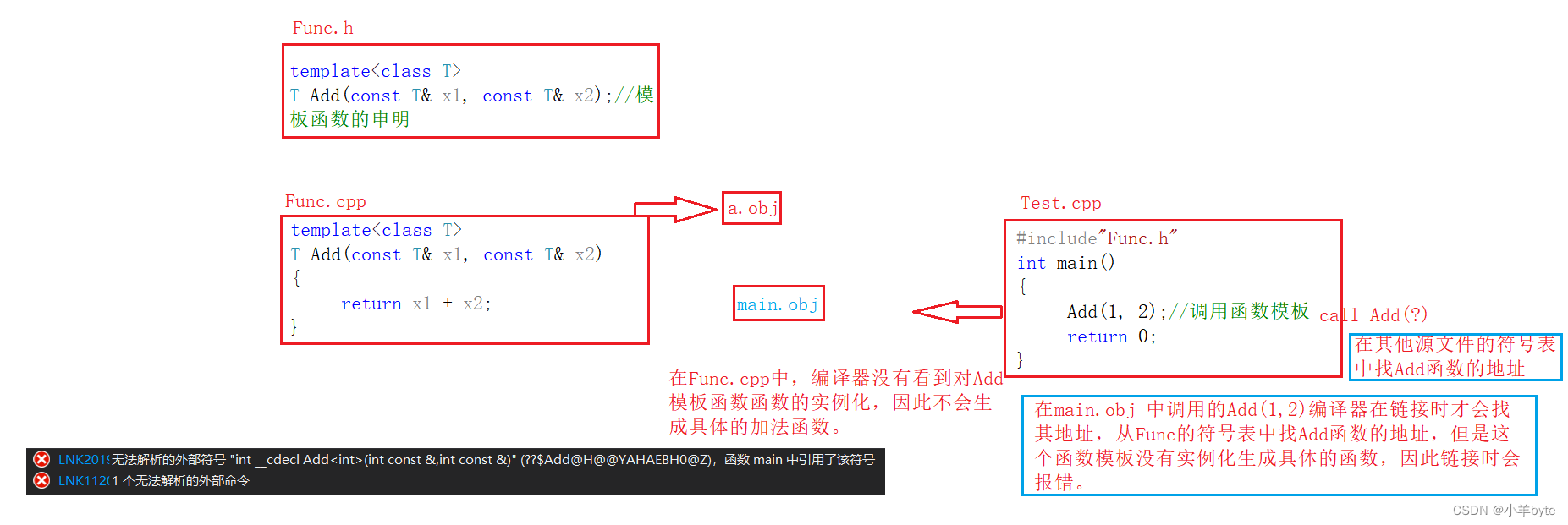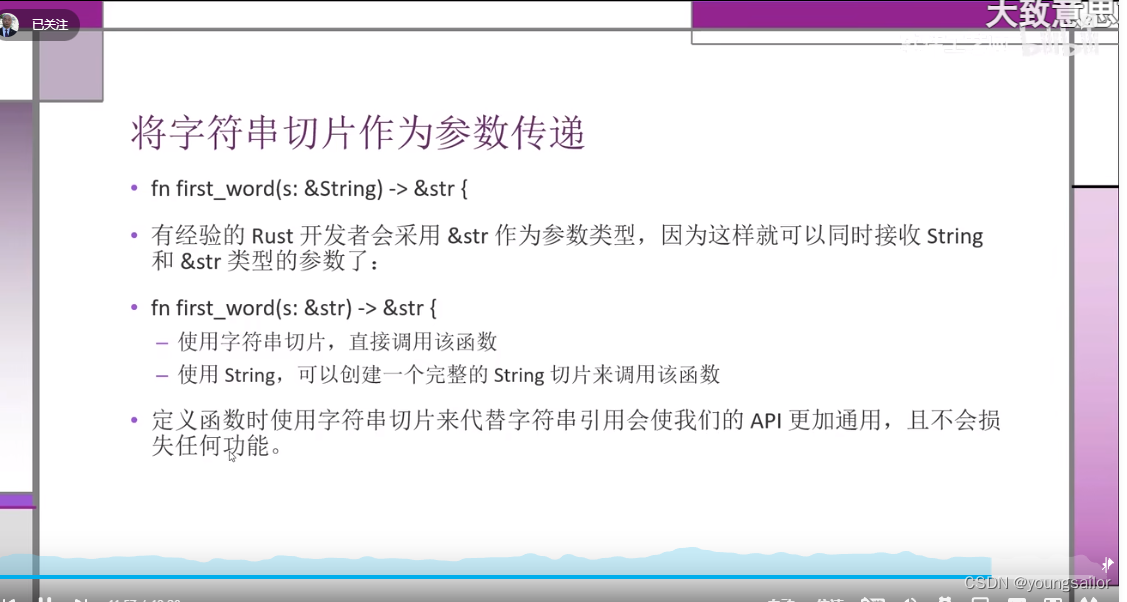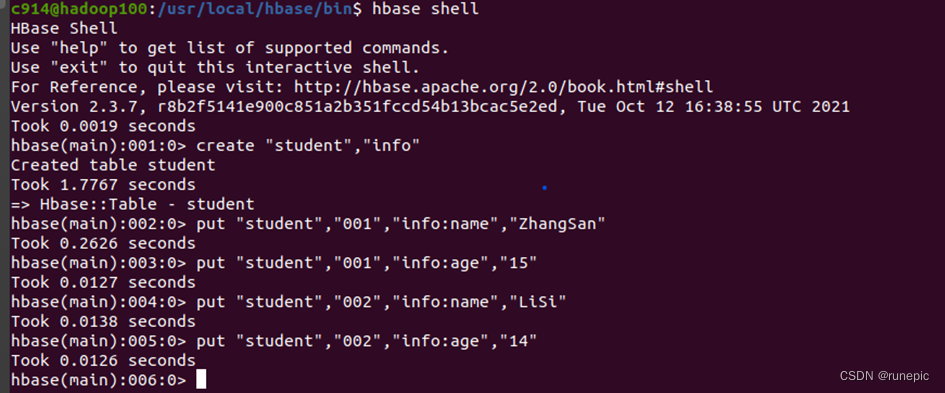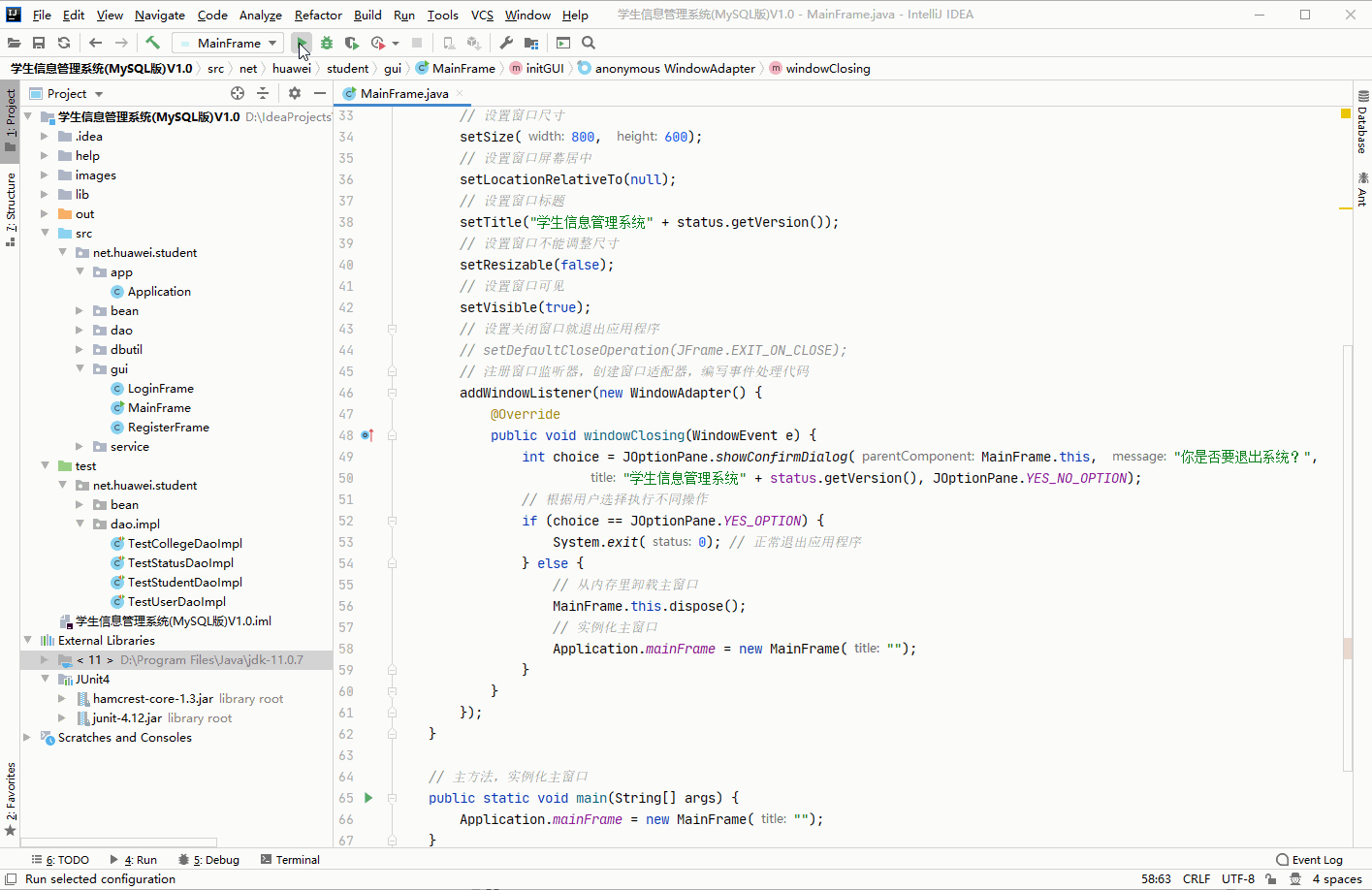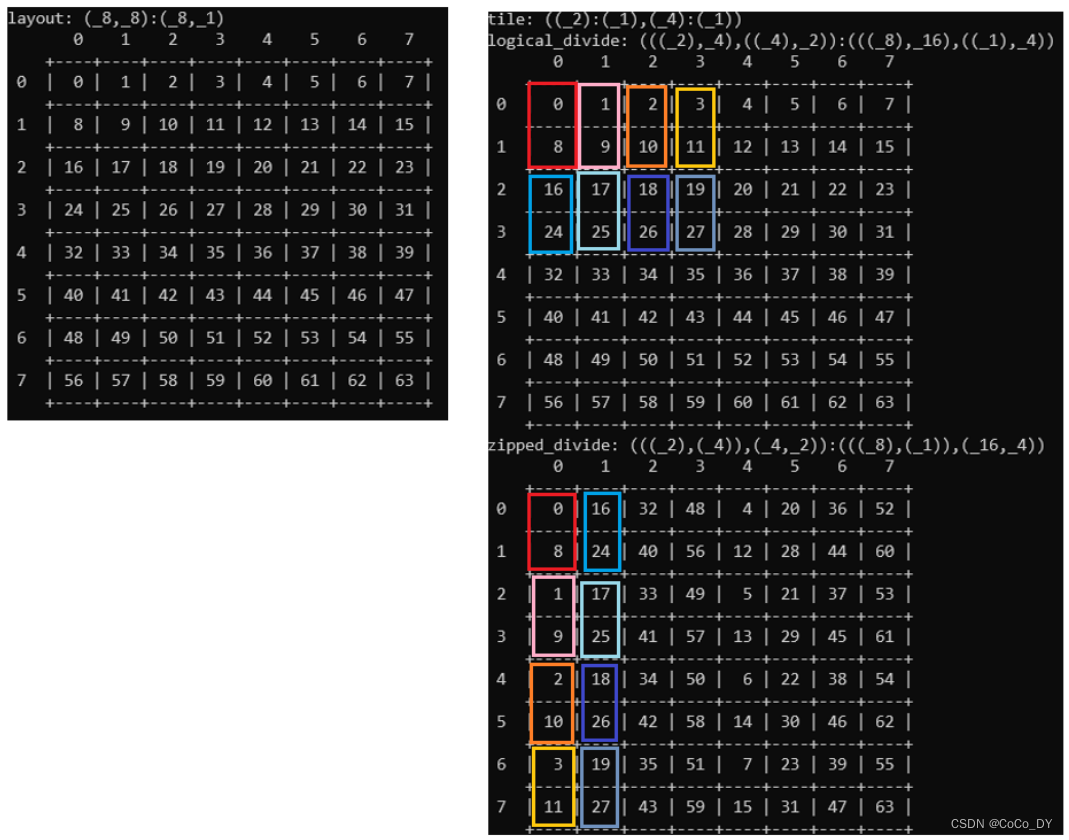相对于 synchronized 它具备如下特点
- 可中断
- 可以设置超时时间
- 可以设置为公平锁
- 支持多个条件变量
与 synchronized 一样,都支持可重入
基本语法
// 获取锁
reentrantLock.lock();
try{
// 临界区
} finally{
// 释放锁
reentrantLock.unlock();
}
1、可重入
可重入是指同一个线程如果首次获得了这把锁,那么因为它是这把锁的拥有者,因此有权利再次获取这把锁
如果是不可重入锁,那么第二次获得锁时,自己也会被锁挡住
@Slf4j(topic = "c.TestReentrant")
public class TestReentrant {
static ReentrantLock lock = new ReentrantLock();
public static void main(String[] args) {
method1();
}
public static void method1() {
lock.lock();
try {
log.debug("execute method1");
method2();
} finally {
lock.unlock();
}
}
public static void method2() {
lock.lock();
try {
log.debug("execute method2");
method3();
} finally {
lock.unlock();
}
}
public static void method3() {
lock.lock();
try {
log.debug("execute method3");
} finally {
lock.unlock();
}
}
}
由结果可以证明:ReentrantLock 是可重入的

2、可打断
举例说明:
@Slf4j(topic = "c.TestInterrupt")
public class TestInterrupt {
public static void main(String[] args) {
test1();
}
private static void test1() {
ReentrantLock lock = new ReentrantLock();
Thread t1 = new Thread(() -> {
log.debug("启动...");
try {
lock.lockInterruptibly();
} catch (InterruptedException e) {
e.printStackTrace();
log.debug("等锁的过程中被打断");
return;
}
try {
log.debug("获得了锁");
} finally {
lock.unlock();
}
}, "t1");
lock.lock();
log.debug("获得了锁");
t1.start();
try {
sleep(1);
t1.interrupt();
log.debug("执行打断");
} finally {
lock.unlock();
}
}
}
由结果可以看到,main线程获取到了锁,t1线程尝试去获取锁,然后main线程打断t1线程尝试获取锁的过程

注意如果是不可中断模式,那么即使使用了 interrupt 也不会让等待中断
@Slf4j(topic = "c.TestInterrupt")
public class TestInterrupt {
public static void main(String[] args) {
test2();
}
private static void test2() {
ReentrantLock lock = new ReentrantLock();
Thread t1 = new Thread(() -> {
log.debug("启动...");
lock.lock();
try {
log.debug("获得了锁");
} finally {
lock.unlock();
}
}, "t1");
lock.lock();
log.debug("获得了锁");
t1.start();
try {
sleep(1);
t1.interrupt();
log.debug("执行打断");
sleep(1);
} finally {
log.debug("释放了锁");
lock.unlock();
}
}
}
可以看到t1被主线程打断后,并没异常抛出错误,而是正常执行

3、锁超时
1) 立即失败的场景
public class TestTimeout {
public static void main(String[] args) {
test2();
}
private static void test2() {
ReentrantLock lock = new ReentrantLock();
Thread t1 = new Thread(() -> {
log.debug("启动...");
if (!lock.tryLock()) {
log.debug("获取立刻失败,返回");
return;
}
try {
log.debug("获得了锁");
} finally {
lock.unlock();
}
}, "t1");
lock.lock();
log.debug("获得了锁");
t1.start();
try {
sleep(2);
} finally {
lock.unlock();
}
}
}
main线程首先获取到了锁,t1线程尝试去获取锁的时候就会立即失败

2)超时失败
public class TestTimeout {
public static void main(String[] args) {
test1();
}
private static void test1() {
ReentrantLock lock = new ReentrantLock();
Thread t1 = new Thread(() -> {
log.debug("启动...");
try {
if (!lock.tryLock(1, TimeUnit.SECONDS)) {
log.debug("获取等待 1s 后失败,返回");
return;
}
} catch (InterruptedException e) {
e.printStackTrace();
}
try {
log.debug("获得了锁");
} finally {
lock.unlock();
}
}, "t1");
lock.lock();
log.debug("获得了锁");
t1.start();
try {
sleep(2);
} finally {
lock.unlock();
}
}
}
由结果可以判断t1线程在尝试获取锁时,阻塞了一秒钟,一秒后还是没有获取到锁,则返回false

4、公平锁
公平锁是指多个线程按照申请锁的顺序来获取锁,ReentrantLock 默认是不公平的
demo演示证明:ReentrantLock 默认是不公平的
public class TestFair {
public static void main(String[] args) throws InterruptedException {
ReentrantLock lock = new ReentrantLock(false);
lock.lock();
for (int i = 0; i < 20; i++) {
new Thread(() -> {
lock.lock();
try {
System.out.println(Thread.currentThread().getName() + " running...");
} finally {
lock.unlock();
}
}, "t" + i).start();
}
// 1s 之后去争抢锁
Thread.sleep(1000);
for (int i = 0; i < 5; i++) {
new Thread(() -> {
lock.lock();
try {
System.out.println(Thread.currentThread().getName() + " running...");
} finally {
lock.unlock();
}
}, "强行插入").start();
}
lock.unlock();
}
}
按道理说,500个线程是先启动的,应该先获取到锁,但是实际情况,强制插入线程中途就获取到锁了
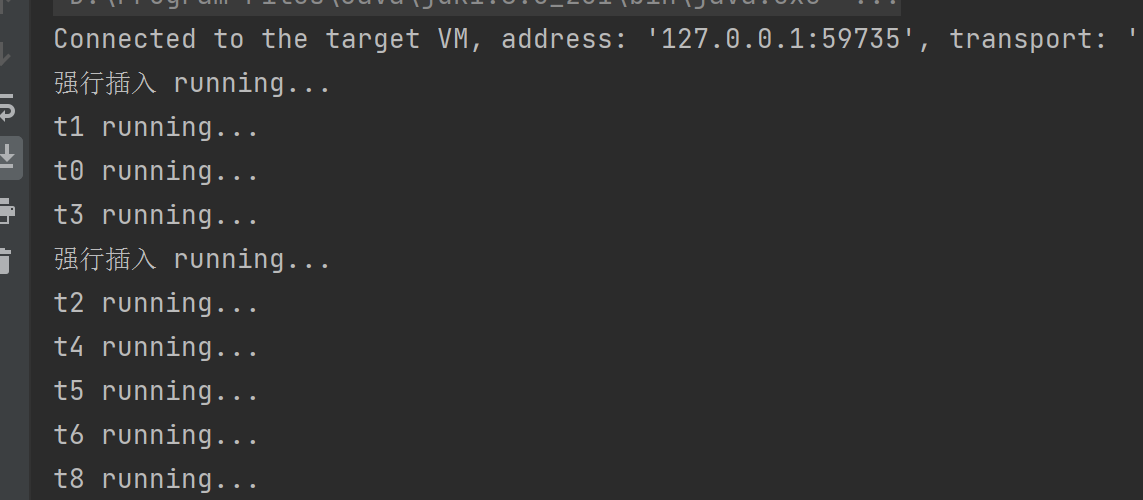
5、条件变量
synchronized 中也有条件变量,就是我们讲原理时那个 waitSet 休息室,当条件不满足时进入 waitSet 等待
ReentrantLock 的条件变量比 synchronized 强大之处在于,它是支持多个条件变量的,这就好比
- synchronized 是那些不满足条件的线程都在一间休息室等消息
- 而 ReentrantLock 支持多间休息室,有专门等烟的休息室、专门等早餐的休息室、唤醒时也是按休息室来唤醒
使用要点:
- await 前需要获得锁
- await 执行后,会释放锁,进入 conditionObject 等待
- await 的线程被唤醒(或打断、或超时)取重新竞争 lock 锁
- 竞争 lock 锁成功后,从 await 后继续执行
@Slf4j(topic = "c.TestCondition")
public class TestCondition {
static ReentrantLock lock = new ReentrantLock();
static Condition waitCigaretteQueue = lock.newCondition();
static Condition waitbreakfastQueue = lock.newCondition();
static volatile boolean hasCigrette = false;
static volatile boolean hasBreakfast = false;
public static void main(String[] args) {
new Thread(() -> {
try {
lock.lock();
log.debug("准备工作,看看有没有烟: {}", hasCigrette);
while (!hasCigrette) {
log.debug("准备工作,看看有没有烟: {}", hasCigrette);
try {
// 释放锁,并在该条件变量上等待
waitCigaretteQueue.await();
} catch (InterruptedException e) {
e.printStackTrace();
}
}
log.debug("等到了它的烟");
} finally {
lock.unlock();
}
}).start();
new Thread(() -> {
try {
lock.lock();
log.debug("准备工作,看看有没有早餐: {}", hasBreakfast);
while (!hasBreakfast) {
log.debug("准备工作,看看有没有早餐: {}", hasBreakfast);
try {
waitbreakfastQueue.await();
} catch (InterruptedException e) {
e.printStackTrace();
}
}
log.debug("等到了它的早餐");
} finally {
lock.unlock();
}
}).start();
sleep(1);
sendBreakfast();
sleep(1);
sendCigarette();
}
private static void sendCigarette() {
lock.lock();
try {
log.debug("送烟来了");
hasCigrette = true;
waitCigaretteQueue.signal();
} finally {
lock.unlock();
}
}
private static void sendBreakfast() {
lock.lock();
try {
log.debug("送早餐来了");
hasBreakfast = true;
waitbreakfastQueue.signal();
} finally {
lock.unlock();
}
}
}












